13 May 12 Tips for Hiking Alone to Keep Yourself Safe
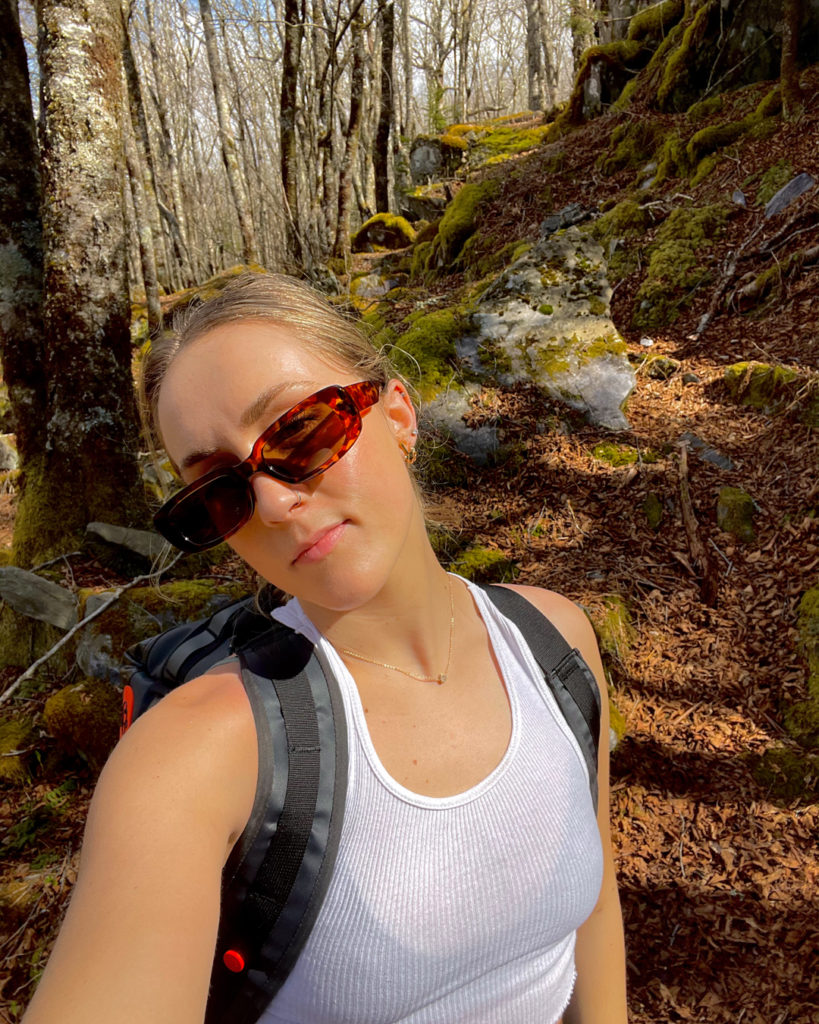
There are a few reasons why you might want to hike alone. Maybe it’s last minute and you have no one to go with, or maybe you just want some alone time in the beautiful outdoors. Whatever your reason, hiking by yourself can be peaceful and empowering. But when venturing out into the wilderness on your own there are definitely some tips to follow and precautions to take to keep yourself safe and have a good time.
After doing a few solo hikes myself, these are my top tips for hiking alone:
1. Go on a popular, well-trafficked, and well-maintained trail.
When hiking alone, it’s extremely important you go on a trail that gets a decent amount of traffic from other people, is popular enough that you can Google what to expect, and one that is well-maintained and easy to follow.
I typically go on hikes I’ve heard of by popular demand or that have high reviews and lots of pictures on the AllTrails app. And while an overly crowded trail isn’t the most fun, I prefer to take a hike where I know I’ll run into at least some people along the way. This means less isolation, help if I needed it, and sometimes even meeting new friends!
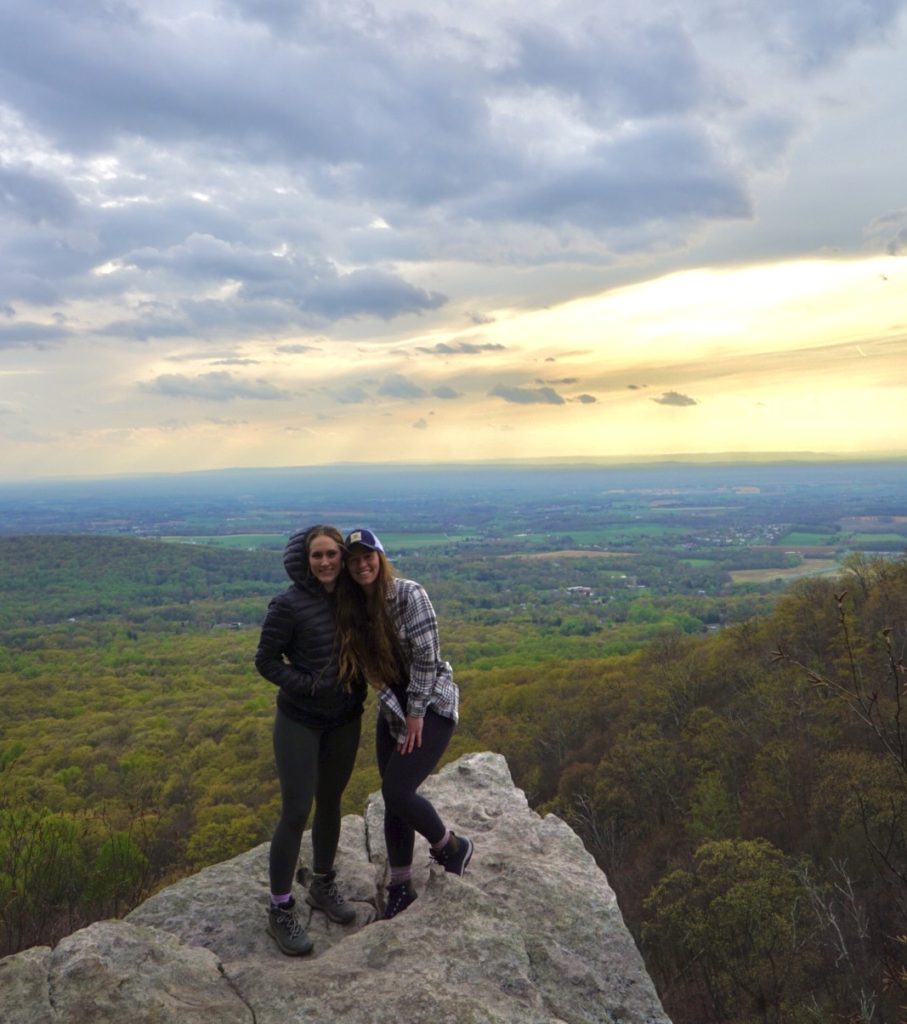
2. Choose a trail that is not too difficult and won’t push you too hard.
Even though you may be capable of doing longer and more difficult hikes, pushing your limits isn’t the best idea when hiking alone. So whatever you consider a challenging trail, I would definitely choose below that.
Personally, my rule of thumb is that I won’t go on a hike alone that’s more than a few miles, will take less than 4 hours, and is rated as moderate or lower.
3. Notify someone of your location and check in with them post-hike.
Before hiking alone, it’s a good idea to text or call someone and let them know exactly where you’ll be going, and then share your location on your phone maps with one person.
Another thing I do is pick a check-in time for after my hike and tell someone in my circle, “Hey, if I don’t check in with you by __ then call me. If I don’t pick up after 3 calls, notify someone, here’s where I’m hiking:___.” It sounds a little intense, but always good to have a plan just in case (and from solo traveler experience, it’s good to get into these kinds of habits).
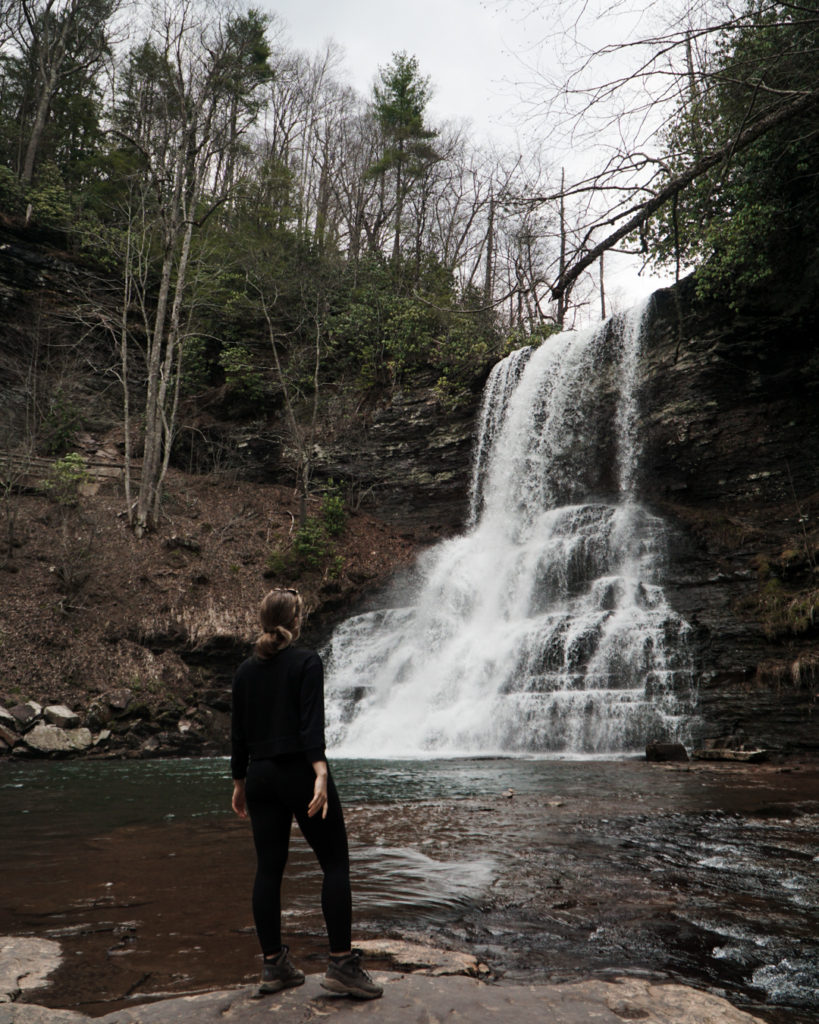
4. Hike during the day and allow plenty of time to finish the trail within daylight hours.
Hiking during sunlight is a must. Plan accordingly, and learn how long the trail takes people normally. Additionally, while hiking keep track of how much time it took you to do half the trail, so you know when to leave the view and continue on in order to make it back before dark.
Unfortunately, this usually means no hiking to catch the sunrise and no staying for sunset. Those kinds of hikes are awesome, but not when you’re alone. Trust me from experience, the view won’t be worth it when you’re hiking through the dark by yourself.
(I’ve pushed it only once before, staying just long enough to catch the beginning of sunset before leaving. I ended up making it back just before complete dark, scrambling down the trail having a panic attack the whole way. I would never recommend doing that nor would I do it again).
5. Stay on the trail
If you followed tip #1, the trail should be well-maintained and obvious to follow. But regardless, take note of the path and stay on the trail by following signs and any marking like on trees.
I usually follow the route on the AllTrails map, and either bring a physical park map or have a photo/screenshot on my phone.
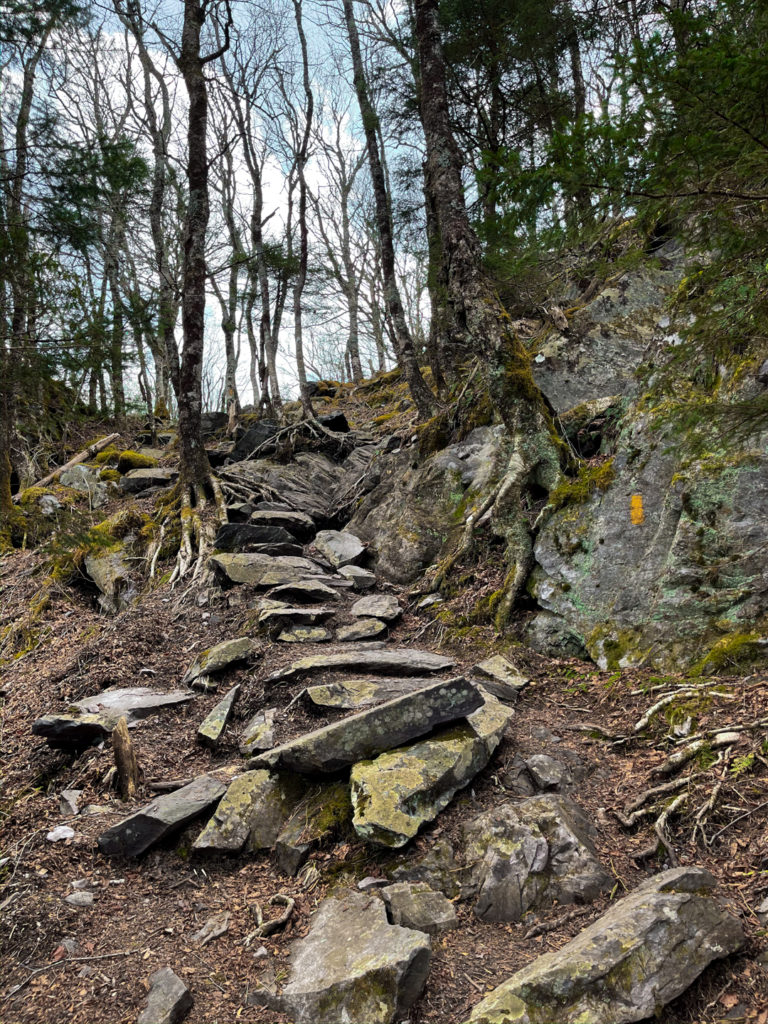
6. Check the weather
This is simple, you don’t want to be caught in a rainstorm or not have enough layers. Always check the weather before starting.
7. Be prepared with the proper gear and a charged phone
First, make sure you have plenty of food and water. You also want to have a fully charged phone, an extra layer, a headlamp/flashlight in case, and a portable battery and charger. That’s my bare minimum I’ll bring on any solo hike no matter the trail.
However, if you’re going on a longer, more difficult trail consider also bringing a first aid kit and some people also use a satellite phone. Both are great precautions to take and may make you feel more comfortable.
Truthfully, I forget my first aid kit a lot and don’t have a satellite phone which is again why I stick to short, popular trails when hiking by myself.
8. Research local wildlife
It’s good to know what you should be on the lookout for and if there are any extra precautions you should take in regards to wildlife. It’s best to do this by reading up on the park’s websites beforehand and there are often signs at the start of the trail.
9. Stay aware of your surroundings throughout the hike
Be mindful, watch your step, keep track of the trail, look around you, and if you like to listen to music have it on speaker and low volume, never in headphones.
10. Consider having a protective item
Pepper spray, a knife, bear spray if necessary, maybe even your dog if you have one. Personally, I bring my pepper spray wherever I go alone in the U.S. and hiking is no different.
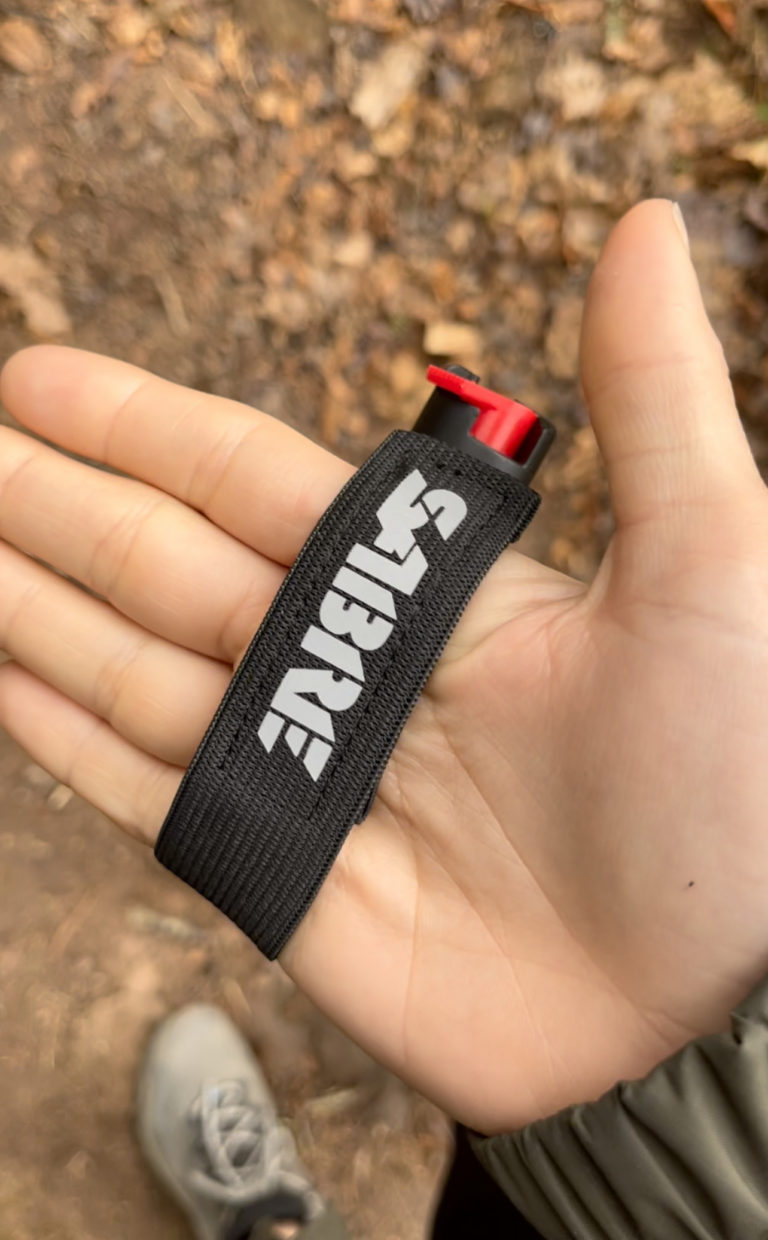
11. Check-in with yourself regularly
You should always take care of yourself, but definitely when alone. Check in to see where you’re at physically, make sure you’re drinking enough water, take breaks and be patient with yourself while hiking.
12. Start small!
If you’re new to hiking or maybe haven’t done it in a while, start with easy trails or start by going with friends a few times to build confidence before trying on your own.
Chances are your hike alone will be no less eventful than hiking with a friend but it’s always good to take care of yourself, stay safe and follow precautions. So get out there and enjoy some nature!
MY experience and personal thoughts on solo hiking
If you want to learn more about my personal experience and perspective on solo hiking, read on!
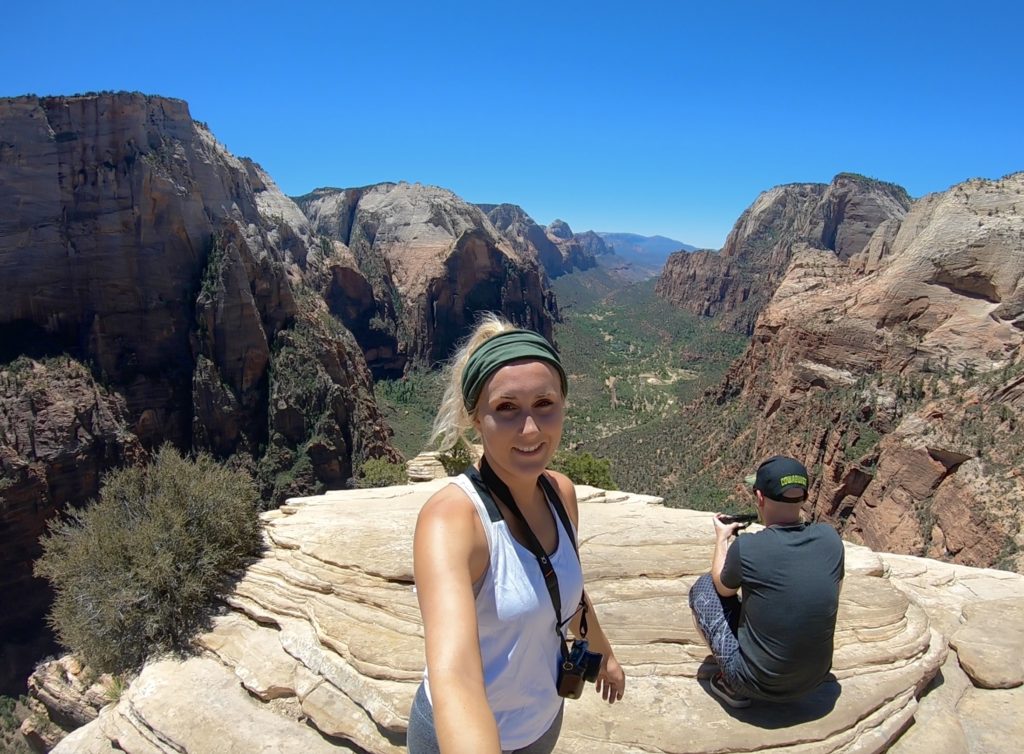
The first hike I did alone was Angel’s Landing at Zion National Park. My sister and I were visiting Utah together, but had done The Narrows hike on the previous day and, unfortunately, she twisted her ankle. But I was determined to not miss out on the famous Angel’s Landing, so I decided to go alone.
And honestly, what an incredible first solo hike! Because it’s such a heavily trafficked trail I didn’t have to worry about things like getting lost or being on the lookout for wildlife. I really just had to keep myself motivated and hydrated. The trail itself was definitely difficult, but amazingly I received loads of encouragement from strangers and even made some friends to enjoy the view with at the top.
After that trip, I did a few solo hikes here and there but just recently started hiking alone much more. Since I’m working remotely, at the last minute I have randomly decided to take mini road trips and afternoon hikes during the week. And because of my lack of planning ahead and travel during the weekdays, I’ve gone alone most of the time.
During these semi-local excursions, I’ve done several solo hikes in Virginia and West Virginia. What I’ve found is tranquility and space for my curiosity to run loose in my home and neighboring state.
But I’ve also learned a lot that led me to write this post; for example, knowing my limits, what I’m comfortable with, how to be prepared, and mistakes to avoid.
All of this was my motivation for sharing safety tips because while hiking alone can be a beautiful thing, taking these precautions matters. I’ve realized that when I wasn’t prepared I was much more anxious, and made mistakes. Like staying too long for sunset and being scared on the way down, or another instance realizing I didn’t have enough time to complete my hike within daylight and having to turn back not even halfway there.
Additionally, when I was prepared in some cases, it really helped. Like hikes being more difficult than I anticipated but thankfully I had plenty of water and time. Or when a man was giving me the major creep vibes and, although nothing happened, I had pepper spray ready and was on a populated trail so others could help, if god forbid, I needed it.
The point is, being prepared and taking precautions matters so that you’re safe, confident and are able to have nothing more than a beautiful hiking day. Solo hiking is the opportunity for so much exploration, just be smart when doing it and you’ll have a positive outdoor experience.
Related Posts
-
A Super Helpful Beach Must Have for Solo Travelers: Waterproof Fannypack Review
The idea of taking a solo trip usually leaves people with many questions like, “How will I mee...
Solo Travel Travel Products Travel Tips -
Practical Solo Travel Safety Tips to Help You Confidently Explore the World Alone
Solo travel creates an incredible opportunity to see more of the world on your own time. But especia...
Solo Travel -
21 Dos and Don’ts to Travel Safe in Brazil
When I mention that I traveled to Brazil (majority of the time alone) one of the first questions I a...
Brazil Solo Travel




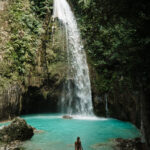

No Comments